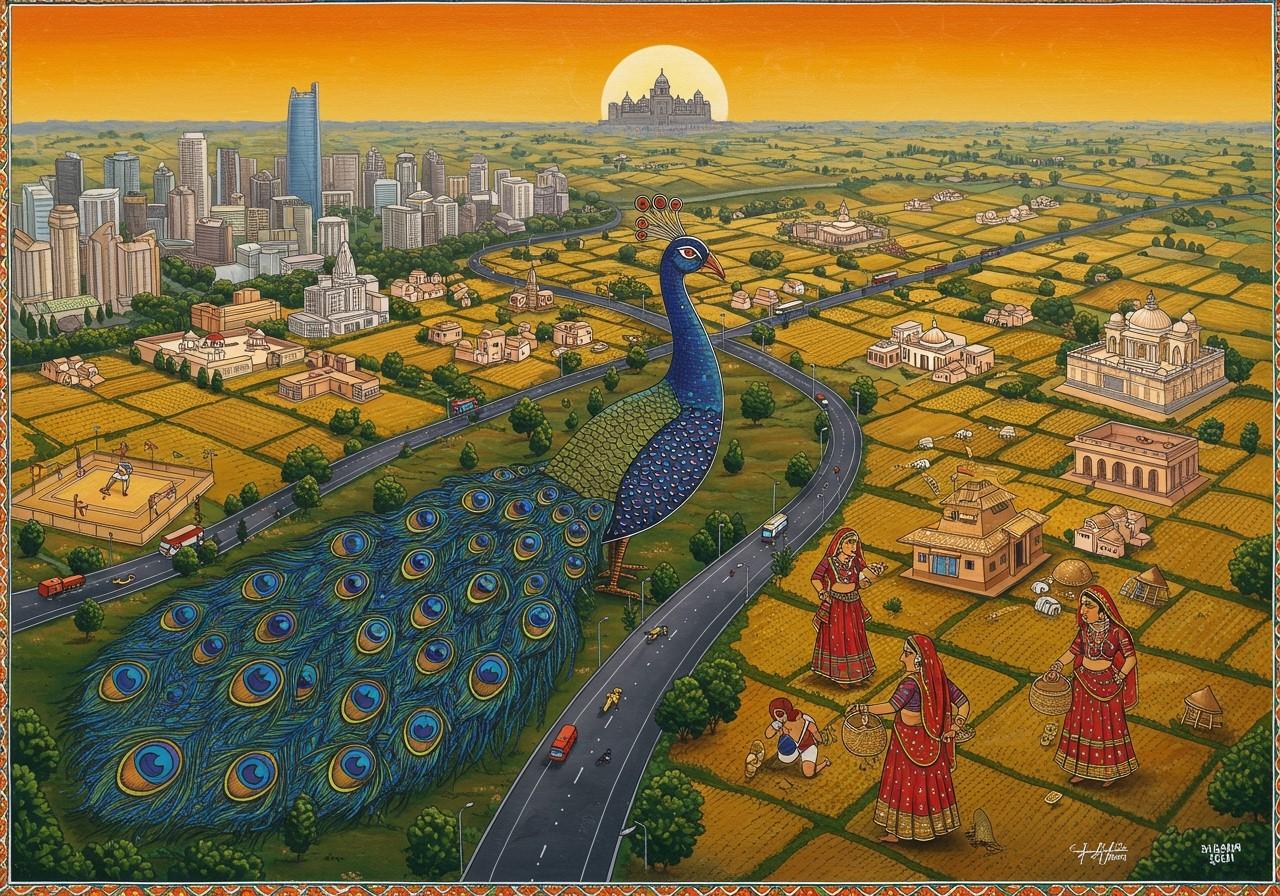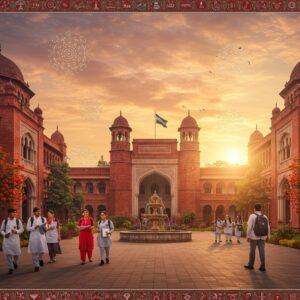
Haryana, a northern state of India, is a blend of rich culture, history, and tradition. Established on November 1, 1966, from the former state of East Punjab, it stands as a significant contributor to India’s agricultural prowess. Known for its production of wheat and rice, Haryana shares its borders with several states: Punjab, Himachal Pradesh, Uttarakhand, Uttar Pradesh, Rajasthan, and the National Capital Territory of Delhi. Its well-developed infrastructure, including roads and railways, plays a vital role in its economic growth.
Population Distribution
According to the 2011 Census, Haryana’s population is approximately 25.35 million. The sex ratio stands at 879 females per 1000 males, which is below the national average. The literacy rate is 75.55%, with a noticeable gap between male and female literacy rates. Haryana’s population is diverse, encompassing various communities such as Jats, Brahmins, Ahirs, and Punjabis. Urbanization has seen a significant rise in recent years, leading to a considerable population residing in urban areas.
Districts of Haryana
Haryana comprises 22 districts, each possessing unique characteristics. Some notable districts include:
- Gurgaon (Gurugram): A hub for rapid urbanization and a thriving IT industry, Gurugram has become a major center for multinational companies and a symbol of modern India. It has experienced exponential growth in recent years, transforming its landscape and demographics.
- Faridabad: An industrial powerhouse, Faridabad is known for its manufacturing and industrial units. As the most populous city in Haryana, according to the 2011 census, its industrial activity has significantly contributed to the state’s economic development and attracted a large workforce.
- Hisar: A key player in the steel and textile industries, Hisar contributes significantly to Haryana’s industrial output. Its strategic location and robust infrastructure have made it an attractive destination for businesses in these sectors.
- Karnal: Known as the ‘Rice Bowl of India’, Karnal plays a vital role in Haryana’s agricultural landscape. Its fertile lands and focus on rice cultivation contribute significantly to the state’s food production and economy.
Each district has its administrative headquarters and contributes uniquely to the state’s overall cultural and economic fabric.
Major Cities of Haryana
Haryana’s key cities contribute significantly to its economic and cultural development:
- Gurgaon (Gurugram): A leading financial and industrial center, Gurugram is home to numerous multinational companies and a driving force in Haryana’s economic growth. Its modern infrastructure and proximity to Delhi make it a prime location for businesses and professionals.
- Faridabad: Known for its manufacturing and industrial units, Faridabad plays a crucial role in Haryana’s industrial sector. As per the 2011 census, it is the most populous city in the state, reflecting its industrial significance and employment opportunities.
- Panipat: Referred to as the ‘City of Weavers’, Panipat is renowned for its handloom products, showcasing Haryana’s rich textile tradition. The city’s historical significance and continued focus on textiles contribute to its cultural identity.
- Ambala: A major center for scientific instruments and education, Ambala contributes to Haryana’s intellectual and technological advancement. Its focus on education and scientific innovation positions it as a hub for knowledge and development.
Economic Significance and Cultural Landscape
Haryana’s economy thrives on agriculture, manufacturing, and services. It is a leading producer of wheat, rice, and sugarcane. The industrial sector includes automotive, IT, and textiles, attracting many multinational companies. Its proximity to Delhi further enhances economic opportunities. Government policies also actively encourage foreign investment.
Culturally, Haryana boasts a rich heritage with traditional music, dance, and festivals playing a significant role. Folk dances like Ghoomar and Saang are performed during various celebrations. Festivals such as Teej, Baisakhi, and Diwali are celebrated with great enthusiasm. The state’s cuisine, rooted in its agrarian background, emphasizes simplicity and locally sourced ingredients.
Data Insights (2011 Census)
- Most Populous City: Faridabad (1,404,653)
- Gurugram Population: 1,153,000
- Most Populous District: Faridabad (1,809,733)
- Least Populous District: Charkhi Dadri (500,000)
- Population Increase (2001-2011): 19.90%
Poojn.in: Supporting Haryana’s Traditions
Poojn.in, India’s leading online store for cultural and religious goods, proudly supports Haryana’s rich traditions. We offer a wide selection of products relevant to the state’s cultural practices, including:
- Paddy/धान (Dhan): Fresh Selected Paddy Seeds for Puja: Paddy holds cultural significance in Haryana, often used in religious ceremonies and festivals. Poojn.in provides high-quality paddy seeds, ensuring authenticity and convenience for your traditional practices.
- Cotton Thread (Red, White, Yellow, Black Color) – 445 Thread: Used in various rituals and ceremonies, cotton threads are essential in Haryanvi traditions. Poojn.in offers a variety of colored threads, catering to the specific needs of different rituals and customs.
- Kala Til (Krishna Til) – Black Sesame: Black sesame seeds hold significance in certain Haryanvi rituals and traditions. Poojn.in ensures easy access to high-quality black sesame seeds, enabling you to maintain authenticity in your practices.
Poojn.in provides convenient online access to a wide range of puja items and other essential products for Haryana’s diverse communities. We deliver right to your doorstep, whether you are in Gurugram, Faridabad, or any of Haryana’s 22 districts. Explore our collection today and experience the ease of preserving tradition with Poojn.in.
Conclusion
Haryana stands as a dynamic state where tradition and modernity coexist harmoniously. Its demographic composition, diverse districts, and vibrant cities contribute to its unique identity within India’s socio-economic landscape. As Haryana continues to progress, it retains its rich cultural heritage, making it a fascinating and integral part of the nation.


